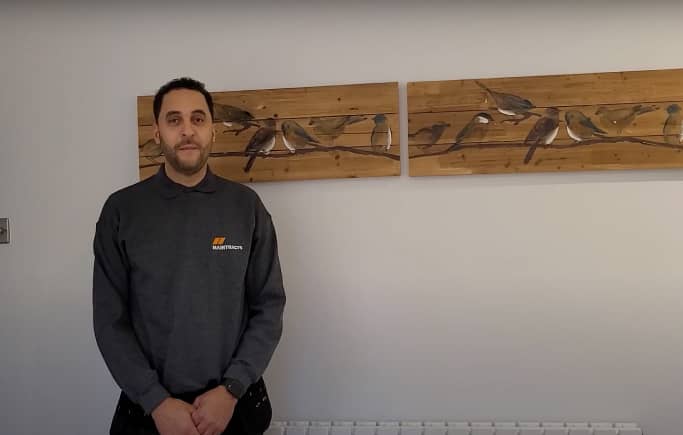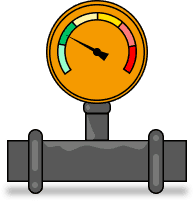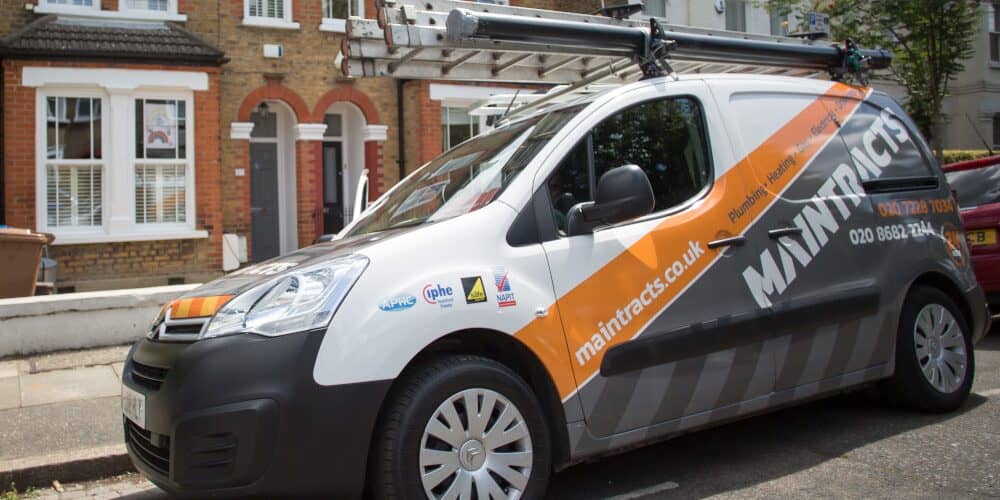If you’ve noticed your home feeling slightly chillier than usual despite setting the same temperature on the thermostat, or you’ve heard a few strange gurgling sounds emitting from you’re your rads, it could be time to bleed your radiator(s). ‘Bleeding’ is the term used to describe releasing trapped air within your central heating system. Releasing the air when you bleed a radiator allows hot water to flow freely round your system, ensuring your heating is working to capacity.
Fear not, bleeding radiators is a quick and easy task that doesn’t always require a qualified plumber to carry out. We’ve included everything you need to know in this article, including a video that guides you through how to bleed a radiator step by step.
Bleeding a radiator is a straightforward task and is one that you can do yourself if you feel confident in doing so. Please watch our video below or follow our step-by-step guide:

Turn your heating system off
Before bleeding the affected radiator(s) make sure that you’ve turned your central heating system off and that your heating system has been given a chance to cool down. Otherwise, you will risk a nasty burn.

Protect your carpet and have everything you need to hand
Prepare the area and source the tools you need. You are going to need a radiator bleed key to open the radiator valve, a dust sheet or old rag to put down under the radiator to avoid water drips on the carpet/floor, and another cloth to cover the opening. You may also want to wear some safety gloves. Radiator keys can be found in any hardware store (such as Screwfix), sometimes it is possible to use a flathead screwdriver depending on the valve type that is on your rad.

Insert the radiator bleed key and turn anti-clockwise
When you are ready, locate the radiator bleed valve, they’re typically located at the top corner of a radiator – a small round hole with a square inside. Insert the radiator key and start turn it anticlockwise (they can be quite tight). Turn it slowly until you hear a hissing sound (a quarter of a turn should do the trick). As the air comes out, the hot water will start to rise up the radiator. Can take anywhere between 10 seconds to a minute to release the air so, have your cloth to hand as water will soon start to come out of the valve and you’ll need a cloth to catch any water that drips or spurts out.

Close the valve
Once you see water, you know that all the air is out. Then you can insert the radiator key back into the bleed valve and slowly turn it clockwise to close it back up. Repeat the process for each radiator that needs bleeding in your home.

Turn the heating on and check the boiler pressure
Once you’ve finished bleeding all necessary radiators, turn your central heating back on and check the radiators are heating up correctly, this should only take a few minutes. You should also check the system pressure by checking the water pressure gauge on your boiler. If the pressure is normal it will read between 1 and 2 bars. However, if it reads below 1 bar, the pressure is too low, and you’ll need to repressurise the system. This may sound like a complex procedure, but a Heating Engineer will simply use a handy tool called a filling loop to provide a temporary connection from the Boiler to the mains so that your heating system can be easily repressurised and filled with water.

Check out one of our Heating and Plumbing Engineer’s demonstrating how it’s done…
How often should you bleed your radiators?
We recommend bleeding your radiators once, or twice a year to ensure your central heating system is in good working order. The ideal time to do it is just before winter so you have peace of mind that your radiators will be as toasty as they can be before the temperatures plummet and the household thermostat wars commence! If you are having to bleed your radiators more than once or twice a year, you should contact a professional heating engineer to get to the bottom of the problem before it escalates.
As well as bleeding your radiators, there are a few other things you can do to ensure your heating system is well maintained. We recommend:
- Getting your boiler serviced by a professional once a year.
- Turning your heating on every now and then in the summertime just briefly to keep the mechanics ticking over.
- Monitor your heating for minor changes. If undiagnosed early on, small leaks and pressure drops can turn into bigger, more expensive problems before you know it. Boiler repair costs are manageable if you jump on the problem quickly.
When should I call a professional heating engineer?
If bleeding your radiators doesn’t solve your heating problems, your radiators may need to be flushed. Flushing refers to cleaning out the radiator sludge - a mixture of rust, dirt and scale that inevitably builds up over time and circulates through the system. Sludge is one of the biggest causes of boiler breakdowns and can rapidly age your system so, don’t delay in getting this seen too. We would always recommend getting a professional to flush your system.
We completely understand that DIY is not for everyone. If you think your radiators need of attention, but do not feel confident bleeding them yourselves, the team at Maintracts Services are always happy to help. Our friendly and knowledgeable heating engineers are Gas Safe registered with extensive experience with jobs of all types and sizes, providing effective solutions without the need for an ongoing contract or call out charge. Just give us a call and we’ll take care of the rest.

